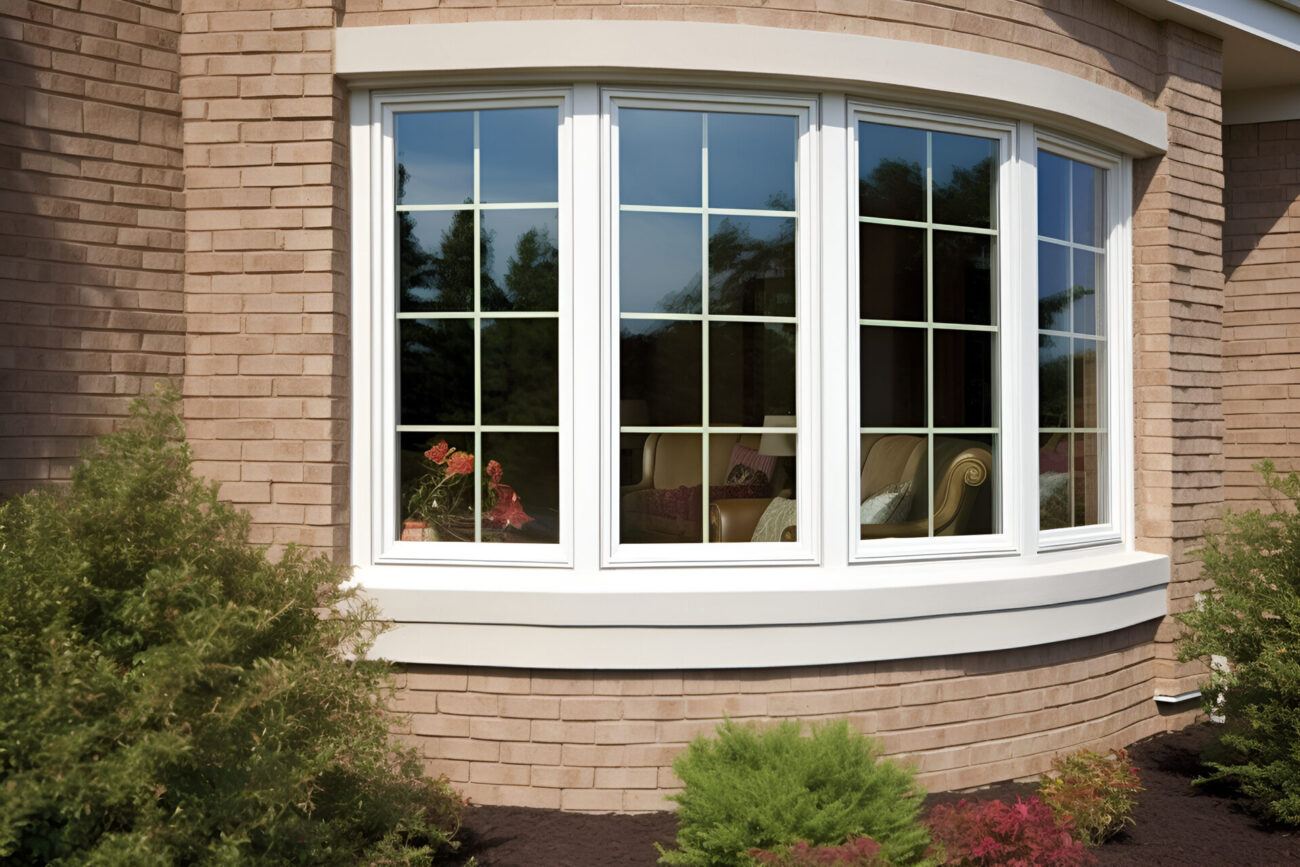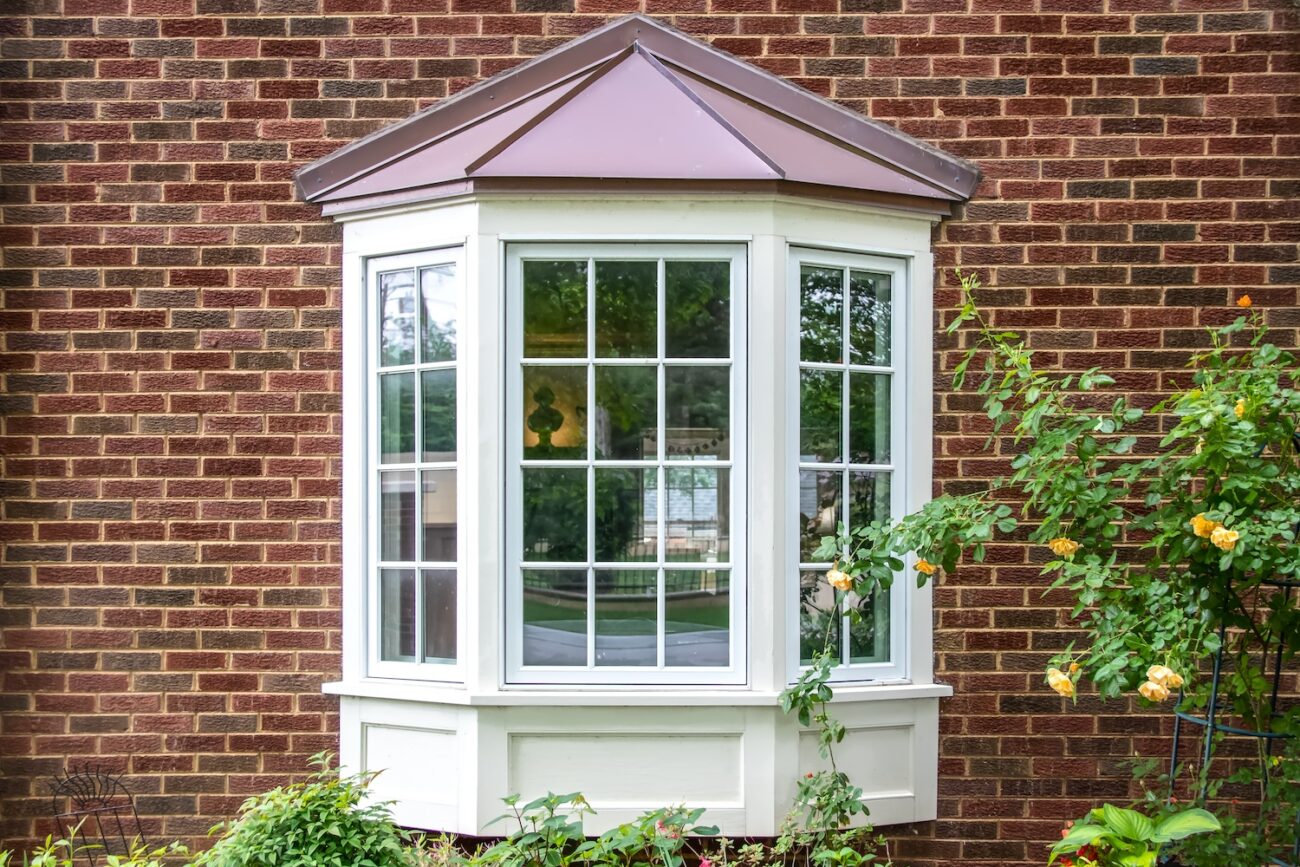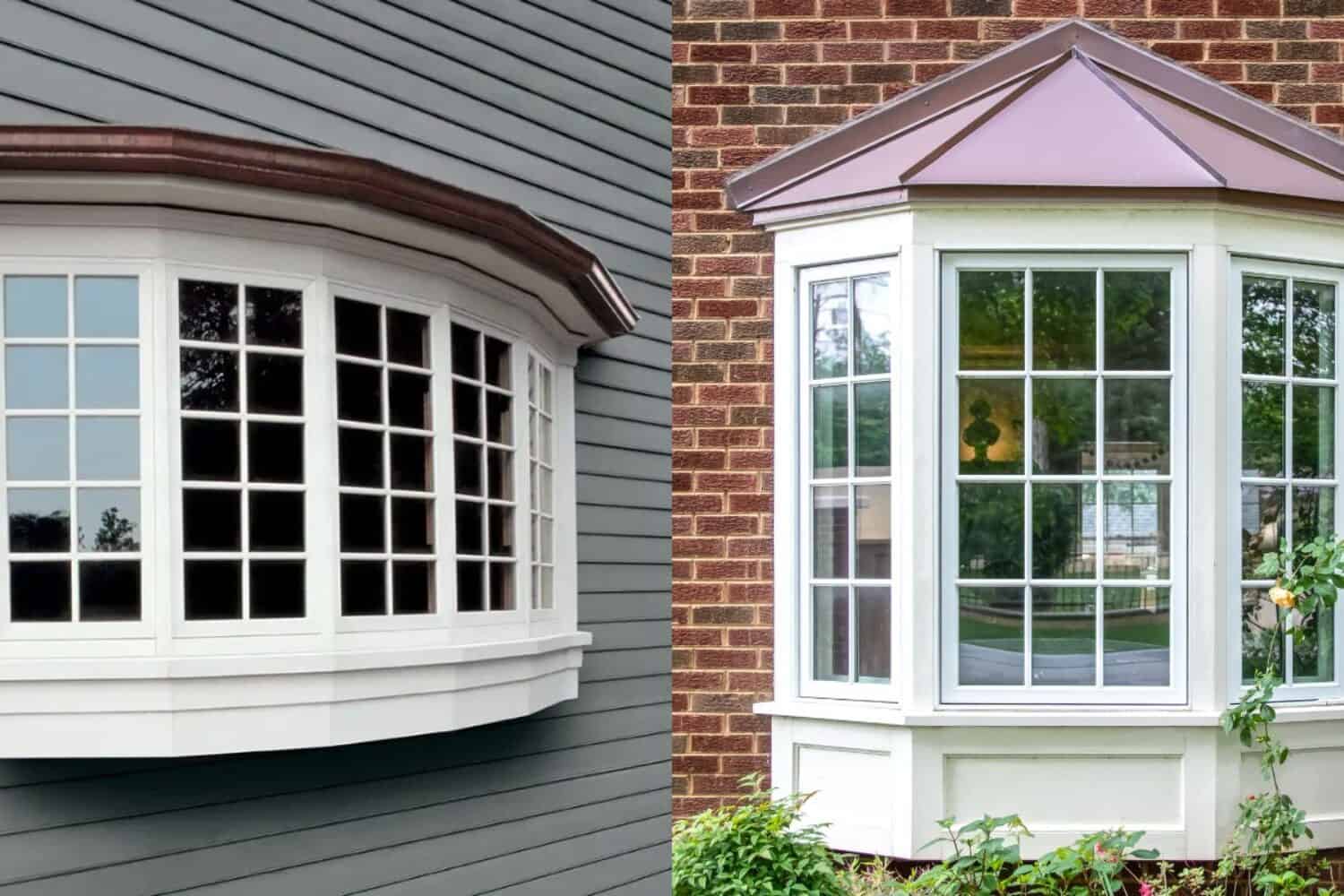When it comes to window styles, both bay windows and bow windows are elegant options for enhancing your home’s natural light and window aesthetics, but these options for your dining room or living room windows also each have their own advantages and disadvantages. Let’s compare the bay window vs. bow window to help you choose between these two styles based on their design and functional differences.
Structural and Visual Differences Between Bay and Bow Windows
Both bow and bay windows offer curb appeal improvements for your home, but their structural differences bring a different look and unique function to your home.
One of the main differences between a bow window vs bay window is that a bay window has an angular design while the bow window has a curved appearance.
The bay window is structured with three windows set at angles to each other. The main middle window is a larger picture window while the two side windows, which are set adjacent to the middle one, are smaller. The design of a bay window also creates its own hip roof, which is one of the exterior window features of this type of window.
A bow window is constructed by joining multiple smaller windows of about the same size at slight angles to each other to create a gentle outward arc. There is no middle picture window in bow construction like there is in a bay window. It is more that the entire curve constructed by the smaller windows creates a large picture window. A bow window gives the appearance of a curved wall jutting out from the home’s exterior.
How Each Window Type Changes a Room’s Look and Function
Bay Windows
The angular construction of a bay window extends the interior walls of a home, expanding the space and creating extra seating or storage. It also provides a dramatic view and a focal point in a living or dining room.
Bow Windows
The curve of a bow window offers a softer, more traditional aesthetic look and offers dramatic, panoramic outdoor views. Bow windows also enhance the overall natural light in a room due to their wider design.

Example of a Bow Window
Ideal Applications for Each Window Style
Bay Windows Applications
If you are looking for more modern window styles, the bay window works well. Modern or minimalist homes benefit from the sharper angles and defined spaces found in the bay window design. Bay construction offers versatility to a space and can be used as a reading or breakfast nook, a workspace, or storage. It also adds natural light and improved ventilation to a room.
Bow Window Applications
The bow window design is suitable for traditional or Victorian architecture, adding elegance and charm to your home. They can be used in a variety of interior spaces, such as kitchens, dining rooms, living rooms, or offices and increase the natural light of any given space and are often well-suited for growing plants. Architecturally, bow windows are also able to wrap around the corners of a home to add both interest and unique outdoor views.
Pros and Cons of Bay vs. Bow Windows
Every window style has its pros and cons and bay vs bow windows are no different.
Bay Windows
Pros
Bay windows are easier to install than bow windows and are a more cost-effective choice. They are also better for smaller spaces as they do not require the same footprint as a bow, making them ideal for room expansion projects.
Bay windows cost between $1,800 to $4,000 to install. The price range depends on window size and the frame materials and glass type used, and local labor costs.
Cons
Although bay windows do increase the light that enters your home’s interior, they do offer less natural light compared to bow windows. They also have a more limited capacity to create panoramic views.

Example of a Bay Window
Bow Windows
Pros
One of the bow window advantages is its superior natural light enhancement. The rounded design creates a classic look that is ideal for larger rooms and offers the joy of true panoramic views of the outdoors. Few other designs rival the superior picture window benefits of a bow design.
Cons
The window installation of a bow design is more complex than bay windows and comes with higher costs. Bow windows also require more wall space to install than bay windows, and are better suited for larger rooms.
The average price of installing a bow window is about $3,900 but can run, on average, anywhere between $1,500 to $15,000. This also depends on the window size, materials used, any custom options added, and local labor costs.
Bow Windows Vs. Bay Windows: Considerations for Choosing
If you are considering a window replacement, no matter what style, considering your home’s architecture, room function, and budget will always help narrow your decision making.
Home Architecture
Considering how the structure of a bay or bow window will affect your home’s architectural style can help you make a choice between these designs. Usually, angular bay windows complement more modern designs while the curve of bow windows look best with classical designs.
Room Function
When considering between a bow or bay window, one of the most important home design tips is to consider the room’s function. For example, choose a bay window if you are looking for cozy window seats or added storage. If, however, you are looking for interior light optimization or have an outdoor space you want to enjoy by creating panoramic views from your window, a bow window will be a better choice.
Budget Considerations
Bay windows are generally more affordable, while bow windows deliver a more luxurious feel. The bay window cost is generally more affordable, while the bow window cost is usually higher due to its more complex installation process.
Bay designs are also slightly more energy-efficient windows than bow designs because they have less window panes. This can also make them more cost-effective over time as higher energy efficiency generally means lower energy costs. Bow windows, however, if properly installed with sufficient insulation and high-quality glass can be energy-efficient too.
Bay Vs Bow Window: Final Thoughts
Although both bay and bow windows are large picture windows that can offer a focal point in a room, expand its size, and bring in more natural light, they also have unique features that should be considered before making a choice between them. The angular design of bay windows are best suited for more modern architecture, are more affordable, easily create seating or storage, and can be installed in smaller spaces. Bow windows are best suited for more classic or traditional architectural designs, but cost more and are better suited for larger rooms. They do, however, offer panoramic views, maximize a room’s natural light, and can be installed around corners.
Before making your choice in the bay window vs bow window question, assess your home’s style, space availability, and personal preferences.
Read More: Window Replacement vs. Repair: Which Option is Right for You?

